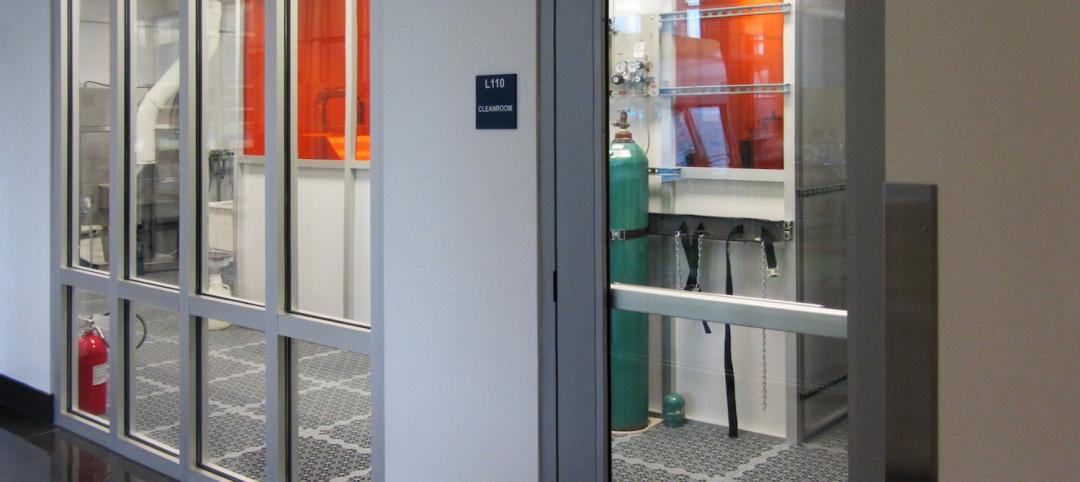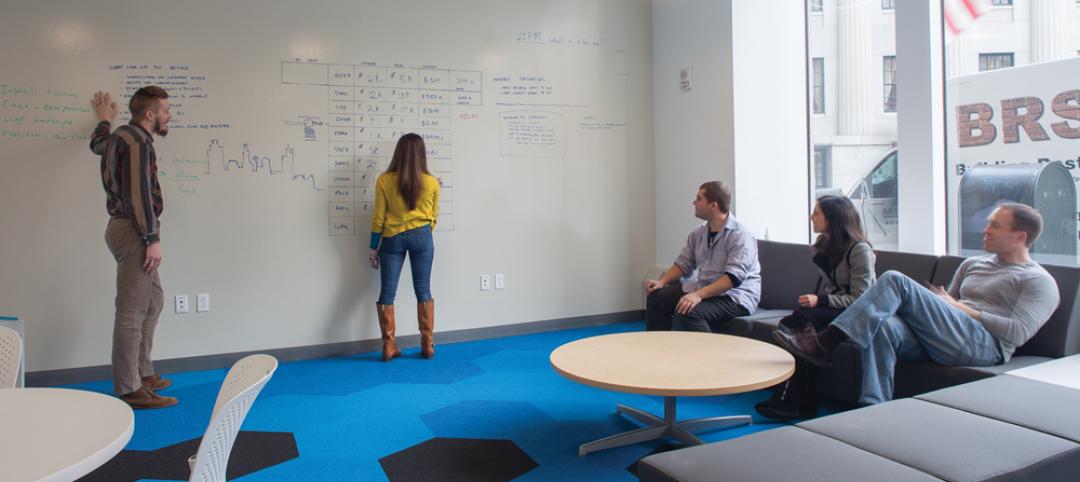Anyone who has taken even a passing glance at the news over the last year has become acutely aware of the supply chain. Empty grocery store shelves may be the first image that springs to mind, but when it comes to the construction industry, the discussion is a little more nuanced.
First, let’s define our terms. The true supply chain is material tracking from cradle to grave. It is an entire system designed to identify a need, acquire the need, and deliver the need. In the just-in-time (JIT) model used by companies from Walmart to Dell to the biggest names in construction, the system has minimal lag time and little room for inefficiency.
In a consumer-facing JIT inventory system, say for computers, a company would have just enough parts on hand to fulfill the current need. Customers order, the company puts together the product and ships it out. The system ideally works together in perfect harmony. Until it doesn't. Just one hitch in the system, let alone several, and the entire ecosystem falls apart.
In construction, JIT has been the modus operandi for decades. The material is delivered to site as and when it is needed. This model does have a number of benefits of course—lower required cashflow upfront and a limited need for storage and security. But, as we saw starting in March of 2020, unforeseen events can have a catastrophic ripple effect on a JIT model.
As widely used as JIT has been, it has never been truly efficient. There are hundreds of moving parts and risk baked into the calculus. The model didn’t need to account for extreme employment variables, local policy restricting movement and workforce, increased costs associated with delays, shortages and fluctuating commodities. In the old model, LEAN upgrades helped to tighten up the system, but was never intended to account for all of these global variables.
As we see it here at Austin, the last two years have given us the opportunity to reinvent how construction works, how we can own the process of supply chain, and how we can pass on what we’ve learned to our clients.
A Supply Chain House of Cards
The disruption to the construction supply chain has gone far beyond just difficulty obtaining materials. Frozen finances, limited workforce and shortened workforce weeks have all stopped projects in their tracks. And that’s just on-site—on the manufacturing side, staff shortages and difficulties sourcing raw material are compounding the challenges for projects across the country.
The truth is that supply chain problems will likely get much worse if the entire system doesn’t change. COVID may have been the reason that we put a magnifying glass on the inefficiencies and risk inherent to the JIT model, but the system was always very fragile. Now that we see it can come down as quickly as a house of cards, it’s time for a new way of managing the construction supply chain. A holistic view that combines logistics, risk mitigation and a new procurement process all tied together with analytics.
A New Way Forward for the Construction Supply Chain
In the traditional model, supply chain issues would often trickle down to the sub-contractors. GCs, subs and trades would procure parts from a local supplier and, more often than not, the owner wouldn’t know or care, as long as the project was getting done. That is simply is not a viable workflow any longer as local part suppliers are rarely an option and cash flow is a real issue for even medium-sized GCs.
So how are we fixing this? How are we continuing to get projects done in this climate? We are customizing our project management process for each client but, in general, we are using a number of tools and risk-mitigation strategies and looking at the supply chain in a holistic way.
The biggest weapon in our arsenal at the moment is early-stage procurement. We are going out at the beginning of a project and instead of making purchases for each phase, we are getting all the materials for the project on site and storing it. We get our hands on all the materials, we stock it, we store it and protect it on campus for as long as necessary. We are procuring extra equipment for material storage like forklifts and box trailers and adding resources to get everything moved around and in the right place. On one of our largest projects, we have essentially created our own “microport” with highly detailed and trackable logistics to keep everything running smoothly and on time.
It takes experience and expertise to make this all work efficiently, but the new model gives us price protection in a volatile marketplace. It gives us the peace of mind of accounting for everything we need ahead of time. And it gives us more control in an increasingly uncertain world.
New Roadblocks to a New Process
Clearly, revolutionizing a model that has been in place for decades won’t come without snags. With that said, none of the challenges we’ve faced so far have been insurmountable. But they do require our clients to look at the supply chain in a new way. For instance, upfront procurement requires different financing and more funding at the beginning.
And of course, the biggest and most fundamental challenge of all: cash flow. Yes, this way of handling the supply chain costs money in exchange for on-time project delivery. On pre-pandemic contracts, none of these costs were accounted for. In private deals, GCs are issuing change orders and for municipal contracts, we’re starting to see more COVID-specific funds coming into play.
Regardless of these potential roadblocks, logistics and researching manufacturers has become a hallmark of our risk mitigation strategy for our clients and for ourselves. We have essentially become our own in-house logistics company, all in the name of keeping our clients’ projects on track.
In the long-run, it won’t just be Austin thinking this way--supply chain analysis and mastery is going to become a top-of-mind concern for everyone in the industry from owners to trades, as well as a crucial component in getting large-scale projects done on time well into the future.
ABOUT THE AUTHOR
Jason Earnhardt is a Supply Chain Manager for Austin Commercial. Combining a background in finance, analysis and construction, he has revolutionized how our clients look at risk mitigation, logistics and supply chain management.
Related Stories
| Jul 7, 2014
7 emerging design trends in brick buildings
From wild architectural shapes to unique color blends and pattern arrangements, these projects demonstrate the design possibilities of brick.
| Jul 2, 2014
Emerging trends in commercial flooring
Rectangular tiles, digital graphic applications, the resurgence of terrazzo, and product transparency headline today’s commercial flooring trends.
| Jun 18, 2014
Arup uses 3D printing to fabricate one-of-a-kind structural steel components
The firm's research shows that 3D printing has the potential to reduce costs, cut waste, and slash the carbon footprint of the construction sector.
| Jun 12, 2014
Austrian university develops 'inflatable' concrete dome method
Constructing a concrete dome is a costly process, but this may change soon. A team from the Vienna University of Technology has developed a method that allows concrete domes to form with the use of air and steel cables instead of expensive, timber supporting structures.
| May 29, 2014
Wood advocacy groups release 'lessons learned' report on tall wood buildings
The wood-industry advocacy group reThink Wood has released "Summary Report: Survey of International Tall Wood Buildings," with informatino from 10 mid-rise projects in Europe, Australia, and Canada.
| May 27, 2014
Fire Rated Glass contributes to open lab environment at JSNN
Openness and transparency were high priorities in the design of the Joint School of Nanoscience & Nanoengineering within the Gateway University Research Park in Greensboro, N.C. Because the facility’s nanobioelectronics clean room houses potentially explosive materials, it needed to be able to contain flames, heat, and smoke in the event of a fire. SPONSORED CONTENT
| May 27, 2014
Contractors survey reveals improving construction market
The construction industry is on the road to recovery, according to a new survey by Metal Construction News. Most metrics improved from the previous year’s survey, including a 19.4% increase in the average annual gross contracting sales volume. SPONSORED CONTENT
| May 20, 2014
Kinetic Architecture: New book explores innovations in active façades
The book, co-authored by Arup's Russell Fortmeyer, illustrates the various ways architects, consultants, and engineers approach energy and comfort by manipulating air, water, and light through the layers of passive and active building envelope systems.
| May 20, 2014
Using fire-rated glass in exterior applications
Fire-rated glazing and framing assemblies are just as beneficial on building exteriors as they are on the inside. But knowing how to select the correct fire-rated glass for exterior applications can be confusing. SPONSORED CONTENT
| May 15, 2014
Paints, coatings, and sealants: 10 new ways to seal the deal
Color-shifting finishes, dry-erase surfaces, and stain-blocking paints are highlighted in this round up of new offerings in paints, coatings, sealants, and finishes.

















